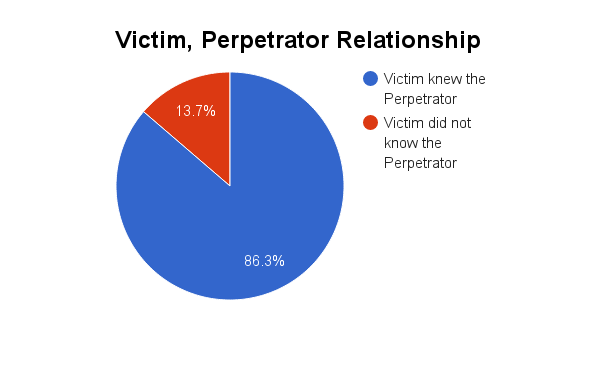Just 954 students, 5.7 percent of the student population at the University of Miami, completed the spring 2015 pilot campus climate survey on sexual violence, according to the results released Monday afternoon. The survey was an initiative by the President’s Campus Coalition on Sexual Violence Prevention and Education to gather data specific to the university.
The survey was sent out to nearly 17,000 students between February and April and asked respondents questions on the overall campus climate, rape myth, prevention programming, campus resources, bystander perceptions and intervention and students’ personal experiences.
Although the link was sent to such a large number of students, the response rate was only 6.2 percent, or 1,036 students. Once students began taking the survey, that rate dropped and 954 students (more than 70 percent of whom identified as females) completed the entire survey. Two hundred seventy-four students who identified as male and eight students who did not identify either as female or male completed the survey.
The disparity between response rates among male and female students highlights nationwide statistics that show women are overwhelmingly the victims of sexual violence and men are overwhelmingly the perpetrators. Most commonly, women are victimized by men they know.
These numbers were reflected in the results from UM’s campus. Of the students who reported having experienced unwanted sexual experiences, 93 percent said the perpetrator was a man and 86.3 percent said they knew the perpetrator.
Almost 29 percent of respondents reported experiencing “unwelcome fondling, kissing, rubbing of genitals or removal of clothing on one or more occasions.” One hundred eighty-one of the 954 students reported being victims of intimate partner violence (IPV), which the Centers for Disease Control and Prevention define as, “physical, sexual, or psychological harm by a current or former partner or spouse.” IPV does not require sexual intimacy to be labeled as such, according to the CDC.
In all questions asking respondents to identify if they have ever initiated unwelcome sexual contact, more women than men reported having initiated the experiences. For example, out of four students, three of the ones who reported initiating completed forced oral sex were women. These statistics appear to contradict the national and above-mentioned prevalence of male-inflicted sexual violence.
Out of such a small group of respondents — most of which are assumed to have some interest in the topic of sexual violence to take time and respond to an entire survey — it is nearly impossible to gauge the accuracy of certain responses, especially when comparing men and women and when attempting to get a picture of the larger campus culture.
It is possible that men and women are both initiating unwanted sexual situations at the same rate on campus, but the low response rate from male students created an unbalanced dichotomy that may skew the realistic statistics that appear on a wider scale. UM’s campus is not a 70:30 ratio of women to men, so the responses are not representative of the student body.
When asked about campus resources, 54.4 percent of respondents said they were aware of resources, programs and training available to them. To combat this issue, one the coalition was aware of before receiving the results of the campus climate survey, the coalition compiled a list of nearly 100 on-campus activities, training or events during the 2014-2015 academic year related to sexual violence prevention and education.
Despite this, less than 20 percent of respondents reported knowing how to report issues of sexual assault or sexual harassment, one of the key points of having programs for sexual violence prevention and education. About 33 percent of students said they had low confidence that UM oversees procedures fairly following a report.
These low ratings of confidence correlated to respondents’ comfort using resources on campus. While 97 percent of the students knew of the Dean of Students Office (DOSO), only 24.5 percent of them reported feeling comfortable reporting to the office. Along with DOSO, University of Miami Police Department and Title IX Coordinator were the resources with the biggest percentage gap between reported student awareness and student comfort.
The coalition determined that in nearly 78 percent of incidents of sexual violence, respondents chose to talk to someone other than university resources (roommates, friends, parents, friends or romantic partners). Of all the listed university resources, the Counseling Center was the foremost place victims of sexual violence shared their experience.
The coalition has emphasized that the pilot survey was a starting point for gathering data on campus, and that it will edit and improve the survey to increase accuracy and participation in future years.
Isabella Cueto serves as a representative for the undergraduate student body and student media on the President’s Campus Coalition on Sexual Violence Prevention and Education.








